Conversational AI. The future of customer service is here.
Enjoy a journey into the future with Imagicle Conversational AI, the platform you need to create voice bots and conversational IVRs - as well as omnichannel chats and chatbots - natively integrated with your calling platform and Imagicle's inbound call management solutions. It makes every interaction natural, intuitive, and efficient, without the need for additional lines or telephone numbers.
The 3 challenges of the customer experience.
Customer experience is how people engage in digital services, and it may refer either to external or internal customers. According to Gartner, among the various challenges of digital transformation, analysts have identified 3 main trends.
- Self Service: users want to solve issues independently, having lifelike interfaces available 24/7.
- Users want to use their preferred channel (often more than one) to communicate as they are used to, or even faster, smarter and easier.
- Voice is still the most important channel, with 65% of users preferring phone calls for treating critical matters.
Well, what can we extrapolate from these trends?
We know that customer experience is becoming more and more conversational, digital, and multi-channel. We also see that users want to be able to work with their favorite brands on any device (most often a smartphone), when and where they want. Finally, a report by Gartner estimates that by 2023, more than 60% of all customer service engagements will be delivered via digital and web self-serve channels, up from 23% in 2019.
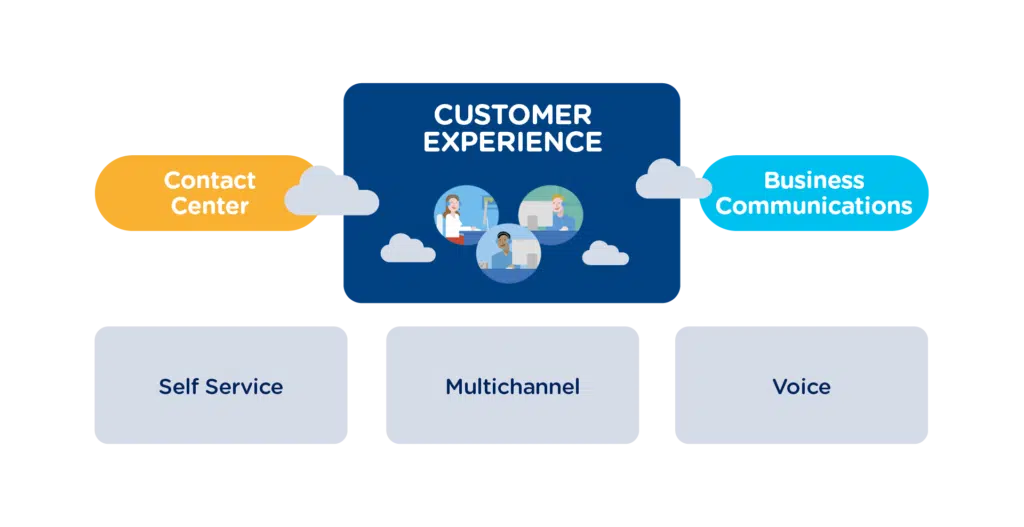
For a few years now, bots have greeted visitors on countless corporate websites’ «Contact Us» page. Meanwhile, the resource with the highest predisposition to carry out an AI-informed conversation has lagged: it is the most important channel for automating inbound, phone-based contacts, a.k.a. the Interactive Voice Response(IVR) system.
Companies around the world have invested billions of dollars in IVRs.
On the other hand, like the rest of communications, also those relating to Interactive Voice Response now meet different needs. It is not surprising that 98% of customers find traditional IVR systems frustrating or try to skip the IVR entirely (Forbes). That’s because we need intelligent, lifelike, efficient tools, and we need them not only because they make our life easier, but also because they allow companies to cut costs: think that, according to Forrester, the cost of resolving a customer support call with an agent can be 48x the cost of resolving it using an IVR.
That said, to date, most IVRs perform elementary and redundant tasks. They answer inbound telephone calls, offer a fixed number of options or prompts, and help route those calls to the correct agent or resource.
So, it’s time to change the game by replacing outdated menus and decision trees that accept a limited response set with an AI-powered IVR solution that does more.
Not only customer experience.
We talked about increasing automation tools for troubleshooting. The aim, it appears, is to improve the customer experience. Yes, true story, but there is much more. If you think about it, in fact, the customer experience is the result of a virtuous process that starts with the people who work in the company to reach the customer only in the last step.
That’s why a Conversational AI allows you to enrich the experience for customers, agents, employees in multiple ways:
- for employees, you can streamline the experience across all departments. For example, you can free up your HR and IT staff from routine queries so they can focus on priority tasks;
- for agents, you can recommend similar tickets and cases, knowledge articles, and next-best actions in order to support them and make their job faster, smarter and easier;
- for customers, you will be able to automate customer support and resolve their requests with personalized and intelligent interactions. Which, as you know, means making them happy. 😉
Voice as the key channel.
Opus Research’s clients tell us that over 60% of the multi-channel conversations between brands and their customers involve telephones, voice, and(yes) IVRs. People often pick up their phones to initiate calls, especially when they have hit roadblocks, critical matters in their personal, digital journeys. Even better if they can then solve the problem with a self-service tool that simplifies the whole process and, if necessary, can scale the call to an operator.
Furthermore, the pandemic has reminded us that there are things that continue to need to be handled on the phone. Being locked in our houses brought us back to calling to do many things we would normally do in person (not surprisingly, there was a surge in voice calls to hospitals, banking, school, finance, assistance services, etc.), which, in a world of communications that has now stabilized as «hybrid», has unquestionably sanctioned the primacy of the voice for the near future.
Intelligent Virtual assistants(IVA), then, can provide the next best thing, as they don’t replicate humans. Still, they can perform many first-order tasks – like tracking a package or changing a delivery address – and constantly learn new skills and capabilities.
These needs are a strong fit for a Conversational IVR or, even better, a «voicebot», the equivalent of the ubiquitous chatbot. Every brand should have this type of IVA on its roadmap to keep up with the times.
Use cases and applications.
The pandemic implied a flood of calls that accelerated already underway trends. Mainly, people have grown more comfortable talking to automated systems, and those systems have significantly improved their ability to respond with satisfactory answers or recommendations.
Thanks to a set of technological solutions that have the ability to create, train and maintain high-quality bots, companies are stepping up to the tasks involved with recognizing the intents of callers based on natural language input and responding with accurate answers, recommendations, or actions. A few examples may include shop localization, shipment info, product features, opening hours, promotions, basic support, virtual receptionist, and much more!
The scope of application is indeed very broad and covers a wide range of industries. A bank or financial institution, for example, can automate operations such as account management, balance check, credit card information and support, offices locations. Insurance agencies can reduce customer acquisition costs by clarifying simple questions through automation or finding a suitable time for a customer to speak with an agent. Healthcare facilities can simplify their patients’ and employees’ lives by automating processes to make appointments and handle emergency communications. Government and educational institutions can finally make accessing various locations and services less frustrating and easier to enjoy and understand.
The list goes on, but what they all have in common is the result of using Conversational AI: improved customer and staff experience, reduced costs, and happier people.
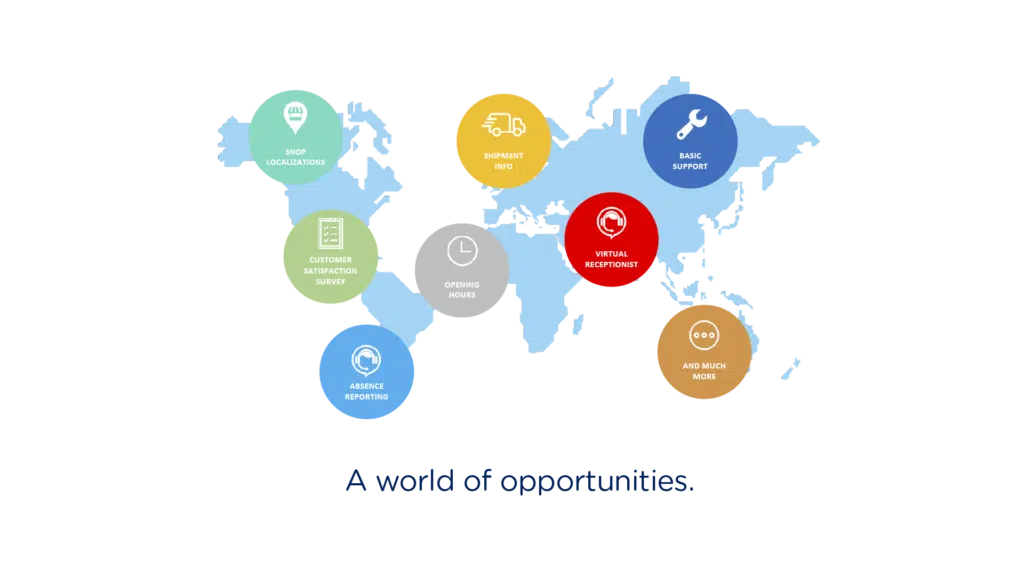
Democratization of AI
Made possible by new “Low Code” tools, the new solutions put development tools in the hands of non-technical staffers. Now luminaries at the departmental level, including the best customer care agents, directly impact the content and quality of a bot’s response. This so-called “democratization of AI” has been a big part of the successful expansion of Conversational AI technologies from the rarified world of early adopters to the wide-open world of general availability.
Businesses of all sizes (not just the largest of large) are poised to be beneficiaries of an accelerating move of Customer Experience to Self Service and Virtual Assistants.
Companies should no longer relegate IVAs (chatbots and voicebots) to the backwaters of digital transformation initiatives, but put them on the front line, where IVRs exist today, where they can field phone calls and bring a broad spectrum of Natural Language Understanding (NLU) and cognitive resources to accelerate the time it takes to fulfill customers’ expressed expectations.
Imagicle Conversational AI. The omnichannel solution you were waiting for.
We are talking about a disruptive solution to automate conversations using a single platform that integrates chat and voice channels with virtual and live agents. – based on a Conversational eXperience Studio able to define the conversational flows, with no code/low code web tool.
It supports a proprietary engine for semantic analysis to understand the natural language, and it is possible to integrate it with customer CRM/ERP/HR systems to fully digitalize the business processes.
A platform. Not only a bot.
So, are we talking about a bot? Yes, and no. Well, let me clarify. This is not a topic we hear about every day, so it is worth giving some definitions to get confident with the terms we use when talking about Conversational AI and what it concerns.
- A Virtual Assistant is either a chatbot or a voicebot dedicated to helping users by providing useful information, answering questions, or accomplishing tasks.
- A chatbot is an automated system with which users interact by exchanging text messages through a chat-like interface.
- A voicebot is a chatbot users can interact vocally with. It requires converting voice into text and text into voice.

Imagicle Conversational AI, though, is much more than this. It’s a platform to automate conversations that always knows where the customer/employee is along the process and comprehends the next step.
Thanks to Imagicle Conversational AI, a user (whether internal or external) can start a conversation via voice or chat (using their favorite tool such as Whatsapp, Telegram, Messenger, Slack, Google, Webex, MS Teams, etc.) in any language, 24/7.
In the first case, the call will pass through the company’s calling platform and, thanks to the Imagicle UCX Suite, it will be taken over by a voicebot-type virtual agent who, thanks to an advanced conversational IVR, will answer and guide the callers in resolving their request. In the second case, the virtual agent will be a chatbot.
In both cases, the platform will interact with the information contained in the internal systems to provide adequate answers. Consider, for example, a request for information regarding the tracking of a shipment, to verify where a shop or an ATM is located, or to obtain support on standard requests.
At any time, the system can scale the request, either via voice or chat, to a human operator if the request proves too complex to manage via bot, or after an explicit request from the caller.
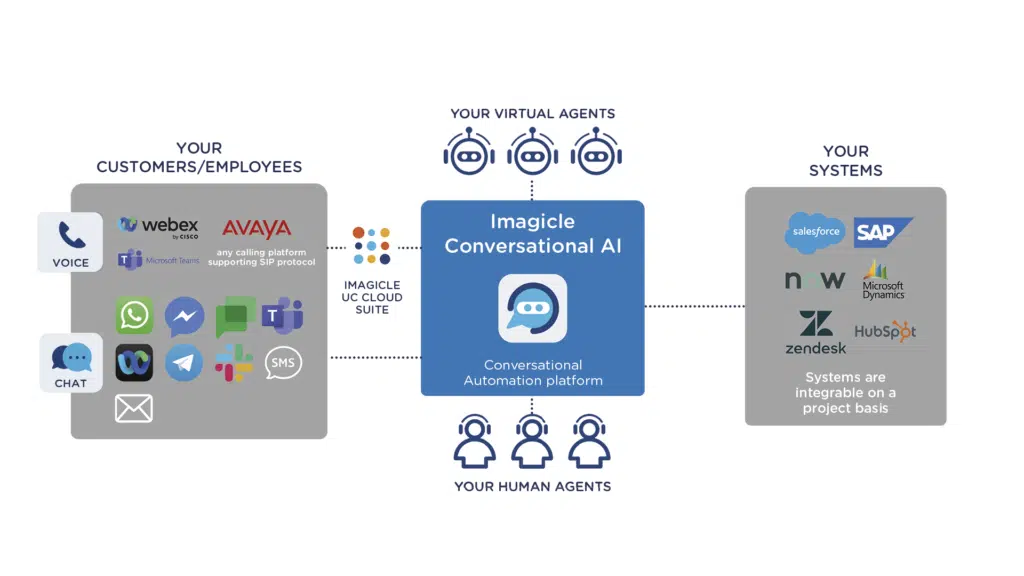
How about taking a look behind the scenes?
More specifically, multiple technologies process and contextualize the spoken or written word and figure out the best way to handle and respond to user input.
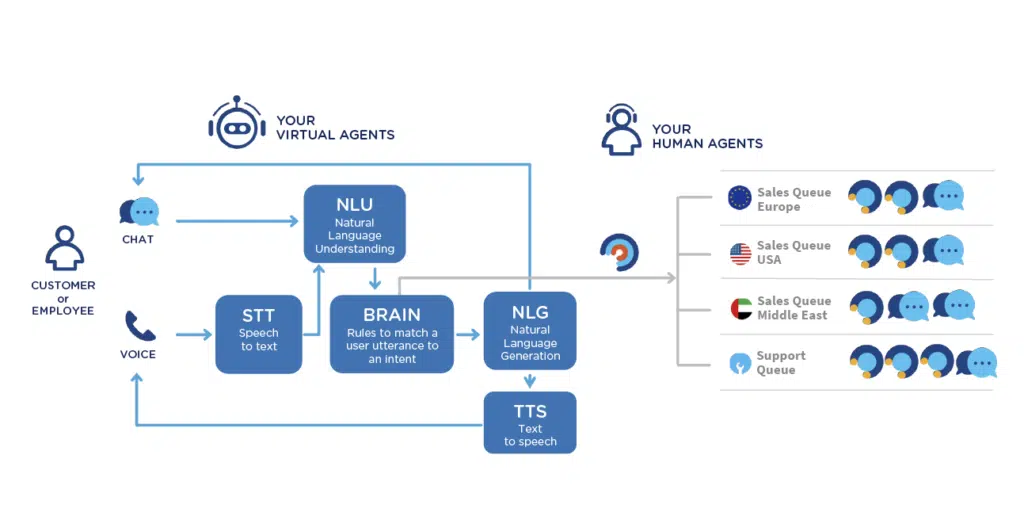
As you can see in the diagram above, the request that arrived via chat is first decoded by an NLU system (Natural Language Understanding that leverages AI to understand what a piece of text means), then the «brain» of the system understands the true intent of the ‘user. At this point, thanks to NLG (Natural Language Generation), it responds adequately to the request.
If it is a voice request, the system works the same way, but, at the beginning of the process, an STT system (Speech to text) transforms the voice into text before passing it to the NLU. At the end of the process, a TTS (Text to speech) system is able to vocalize the response.
When the system’s brain realizes that the request is too complex or the caller wants a «human» interaction, the operator can intervene directly via chat or by telephone. In the second case, of course, the call can be addressed using our Advanced Queuing algorithms and managed by the operator through our amazing Imagicle Attendant Console.
Omnichannel. Manage conversations across voice and digital channels.
Imagicle Conversational AI has been designed to allow the flow definition and then consume it via different channels:
- voice
- chat
- messaging (like Whatsapp, Telegram, Messenger, Slack, Google, Webex, MS Teams, etc.)
- SMS
…and more.
So, we’re talking about a real omnichannel solution!
As we mentioned at the beginning: voice is still the key, but other channels are needed.

How are we different?
The answer to the title question is simple: voice.
We can provide a strong and complete omnichannel solution integrated with the customer calling platform, including voice.
Chatbots in the industry don’t have voice capabilities integrated with the customer calling platform; that’s why voice, the most crucial channel, is our key differentiator.
To make this happen, we designed a very simple yet powerful integration into the Imagicle UCX Suite: we added the possibility to define a new IVR behavior called Imagicle Conversational IVR into our Auto Attendant application, where defining the URL address of the service built with the Imagicle tool.
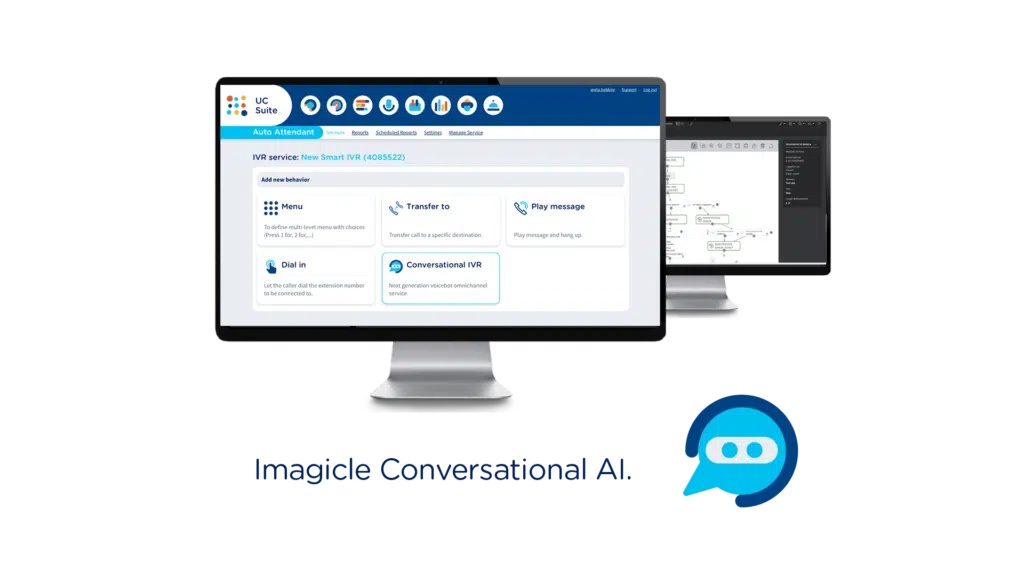
The UCX Suite, then, will execute the conversational flow received by Imagicle Conversational AI with Speech Recognition and Text To Speech capabilities.
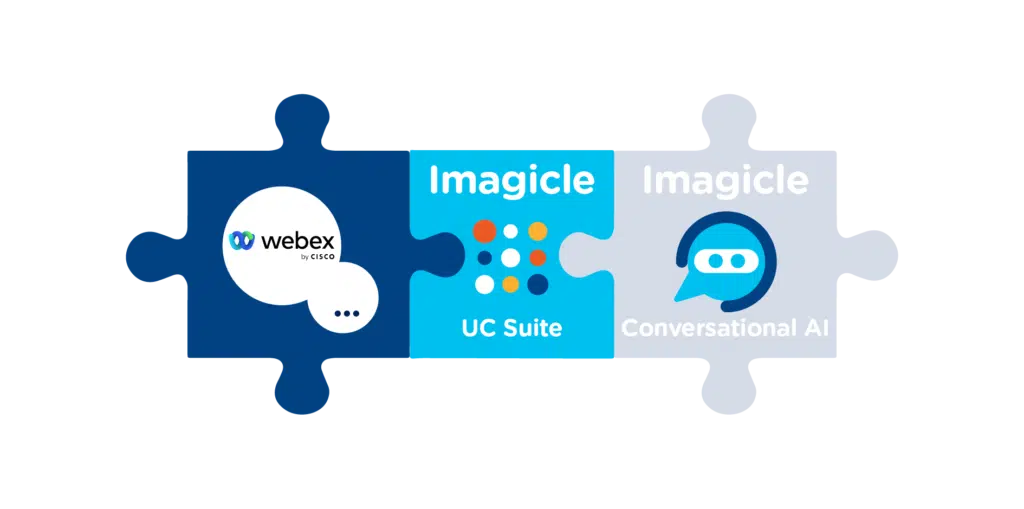
As you can see in the image, on one side there is the customer Calling platform (Cisco, Microsoft, etc.); on the other, there’s Imagicle Conversational AI, while the Imagicle UCX Suite is the link between them, as the engine to connect voice conversational capabilities to your calling platform(On-Prem or Cloud). Such a solution is ideal for anyone who wants to offer constant, effective, and satisfactory customer service with the help of self-service and automation. They will have a virtual agent always available and able to scale to a human agent when appropriate, leveraging the power of Imagicle apps like Advanced Queuing, Attendant Console, and Call Recording.
Again, we are talking about a solid and complete omnichannel customer service that includes voice and is integrated with the customer’s calling platform.
Super powerful and exclusive.
The future, today.
Here at Imagicle, we are ambitious. We like to offer the best to our partners and customers. 
We will launch it as a Cloud-based multi-tenant service that can power any UCX Suite. Moving from a simple auto-attendant to a conversational voice bot + chatbot will be just a matter of subscribing to Imagicle Conversational AI, building the flow, and activating it.
The UCX Suite will run the voice flow, connecting to the customer calling platform on-prem, hosted, or cloud. And we can say this is definitely another Imagicle Conversational AI key differentiator.
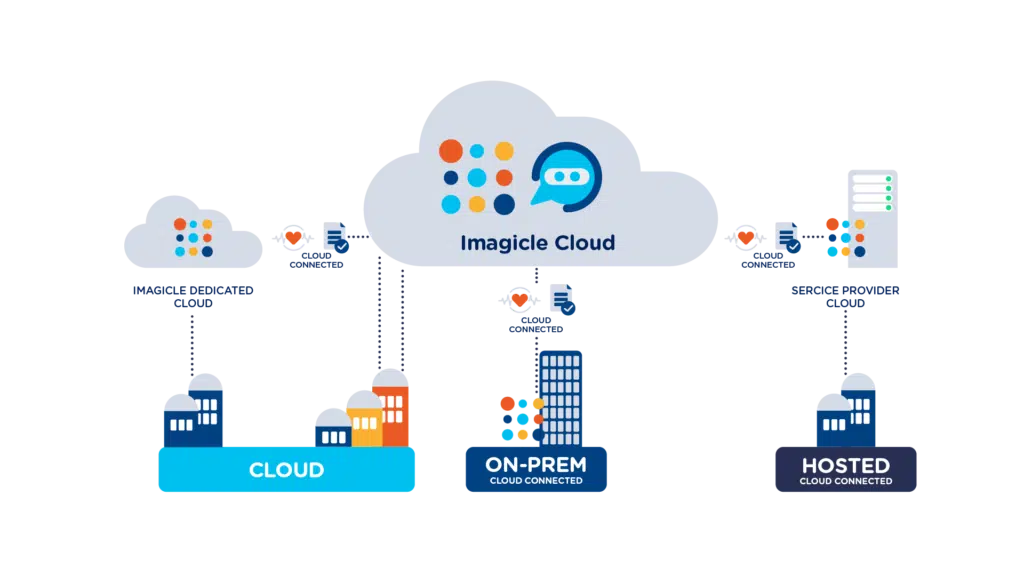
Finally, we’ll work on integrating the other imagicle Cloud services, like Imagicle Voice Analytics, to provide topic modeling of analyzed agent conversations, through which getting the intelligence to fuel the bot intent recognition capabilities.
Artificial intelligence and Machine Learning will drive our innovation and improvements, as they’ve already started to do.
Let’s wrap it up.
Well, that’s it for today, guys. I hope I have conveyed to you the new Imagicle solution’s great potential for companies who want to simplify customer service management processes and offer constant coverage to meet every customer need.
We are already working on some prospects and projects with customers and partners, and we are really happy to see that, besides the initial interest, we are also getting the WOW effect.
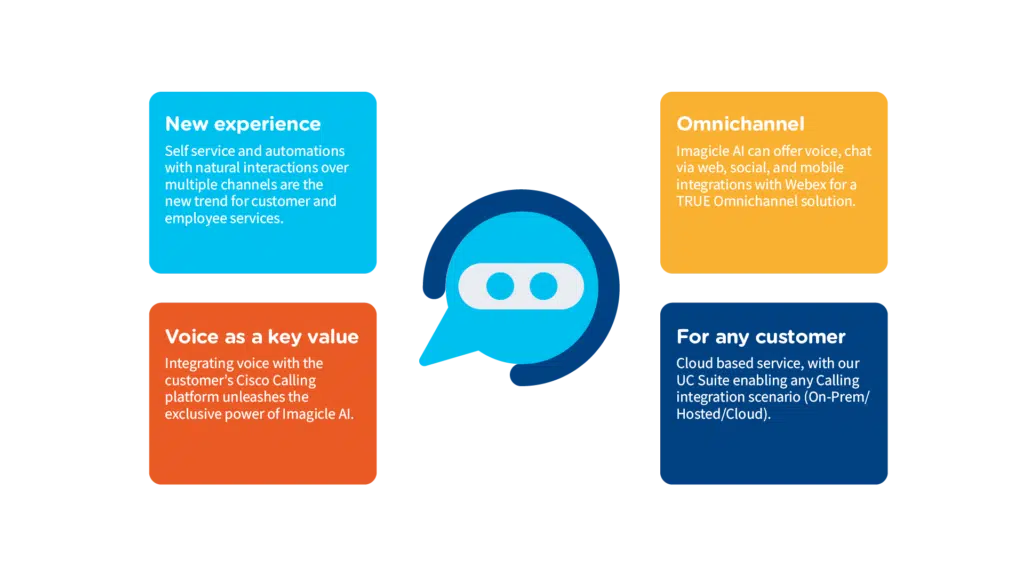
Our enhanced offer will include a complete Suite of UC apps with AI and Conversational omnichannel solutions from the Cloud and in mixed environments, granting the flexibility, security, and innovation needed in the new hybrid (and more digital) world.
Would you like to discover more? Join the dedicated, upcoming webinar!
Conversational AI. Your new superpower.
Join the dedicated webinar on 5 October and start revolutionizing your customer service!
También podría interesarle...
-
Brochure IT Blog
Prova pubblicazione
Prova pubblicazione -
Descubra
BlogES Prova Immagine
ES Prova ImmagineES Lorem ipsum dolor sit amet, consectetur adipiscing elit. Fusce mattis eros ut nisl sollicitudin convallis. Aenean pulvinar consectetur ligula efficitur tincidunt. Nunc scelerisque nunc at leo maximus condimentum. Nulla viverra lorem id imperdiet fringilla. Donec vel vulputate nibh, id euismod nulla. Nulla elit felis, facilisis sed accumsan nec, vehicula in nisl. Quisque posuere augue […] -
Products Blog
Why You Should Choose Imagicle Virtual Agents AI to Empower Your Bank.
Why You Should Choose Imagicle Virtual Agents AI to Empower Your Bank.Discover the level of omnichannel automation Conversational AI brings to your bank.
Prova pubblicazione
 Descubra
Descubra

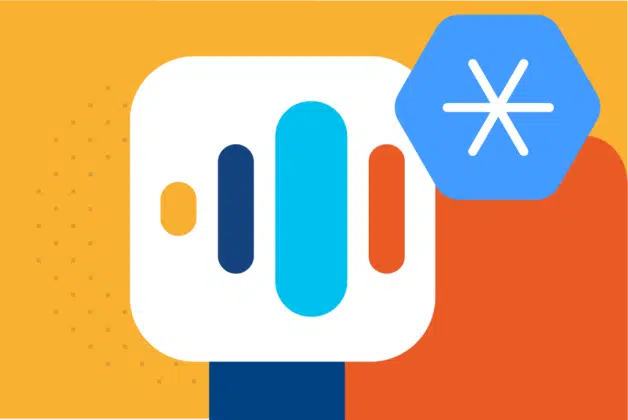

 Christian Bongiovanni
Christian Bongiovanni